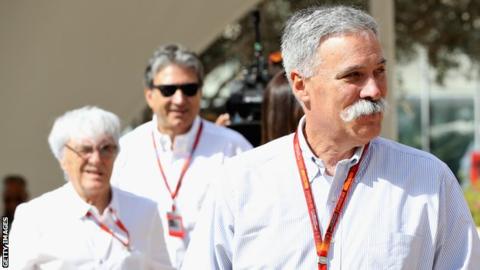

With change in administration, comes a change in thinking, a change in ideas and a change in priorities. With Bernie Ecclestone out, everyone was hoping for F1 to move to more legendary tracks that were not able to find their way in because of Ecclestone’s high fees for hosting a grand prix. Besides, the American heads have already promised more races in the United States. Here we bring you some probable venues for Liberty Media to consider:
Zandvoort (Netherlands)

via Imago
The Circuit Zandvoort
The traditional layout near the dunes hosted F1 races from 1948 until 1985 and became notorious because of Roger Williamson’s lethal accident in the 1973 Grand Prix, but has hosted unforgettable races. The circuit authorities have improved their safety standards since then, but it gets tested every year by the DTM and the F-3 Masters. The Tarzanbocht (Tarzan turn) is a favourite among drivers and fans. What better moment to revive the Grand Prix than now, when the country has a race winner and a world champion in the making? Will Liberty Media add the African continent to the F1 map?
ADVERTISEMENT
Article continues below this ad
Adelaide (Australia)

via Imago
The F1 fraternity visited Adelaide for 11 years until it was replaced by Melbourne
Although Australian motorsports has a lot of nice permanent tracks, such as Mount Panorama/Bathurst and Phillip Island, Formula 1 on the land down under was always an street affair. It all started with Adelaide, with its large roads and flowing layout that served the stage to some title deciders – the 1986 a classic, with both Nelson Piquet and Nigel Mansell losing their chances due to tyre trouble, only to Alain Prost clinch the championship. Ok, the Albert Park in Melbourne cannot lose its place on the calendar but, in times of change, what if Liberty Media created an Australian double-header?
Read: Adelaide or Melbourne: Which is F1’s ideal season opener?
Laguna Seca (USA)

via Imago
Laguna Seca’s Corkscrew will provide a unique challenge
If, as Chase Carey (Formula 1 new CEO) said, United States is really important to the series, a single race at Austin is clearly not enough. And before trying something radical such as a race on New York neighbourhood or a return to Las Vegas, cars and drivers should present themselves at Mazda Speedway, near Monterey (California). An old style raceway it might be, but what better than that to make fans around the world forget a bit those asphalted runoffs? The dream of seeing machines down through the Corkscrew corner is good enough to justify a visit. And it would be nice to add a vintage touch considering the track hadn’t even a boxes complex. Liberty Media should definitely add this iconic circuit on their roster.
Buddh (India)
One of the best tracks designs by Hermann Tilke, the Buddh International Circuit, near New Delhi brought a breathe of fresh air to the Circus, on the form of turns with multiple lines and a challenge praised by the drivers. The first edition, on 2011, was the better one, but it hadn’t anything to do with the track and its top class structures – Red Bull and Sebastian Vettel dominance on those years made the races a bit boring everywhere. More than that, the GP could be a catalyst to develop national auto racing, which happened. Considering the good local audience and the prominence of Force India as a team, a return should be on the cards.
India and China are 2 of the biggest markets for sport and it would greatly benefit Liberty Media to add the subcontinent to the calendar.
Kyalami (South Africa)

via Imago
Kyalami is an interesting circuit and will cement Africa’s place on the F1 map
Gone were the apartheid times and South Africa experienced a huge social and economical growth within the last decades. But the passion for motorsport is alive and as strong as the times in which it was a popular stop on the F-1 calendar, normally one of the earliest rounds of the championship. With a name that means “my house” in Zulu language, the 4.260m track near Johannesburg provides a huge challenge even without being a “Tilkedrome” – has ups and down, fast turns and technical ones. And it was saved of extinction by Porsche, who bought the complex. They’re not in F1 anymore but, by having a top class facility in hands, they wouldn’t consider a bad idea a GP on the revamped circuit.
Kymi Ring (Finland)

via Imago
Formula One has rarely visited the Nordic countries despite having a number of Finnish drivers
It is incredible the fact that, even having three world champions – Keke Rosberg, Mika Hakkinen and Kimi Räikkönen, Finland never hosted a Grand Prix, while neighbour Sweden did (Anderstorp). It is true that the Finland doesn’t have a world class track, but it won’t be the case soon, as the Kymi Ring (nothing to do with the 2007 champion and Ferrari driver) nears completion, to receive Moto GP in 2018. The problem is that local authorities don’t want to spend millions on fees just to have Formula One on the track near Kouvola. But if Liberty Media accepts to talk and negotiate, it can be possible. The thousands of Finnish supporters that annually do their visit to Hungaroring wouldn’t complain, far from that.

via Imago
The legendary Ayrton Senna was a big fan of this circuit
Detroit (USA)
By the same measure as street tracks like Las Vegas and Phoenix were boring, the Detroit layout was interesting. There were a lot of 90-degree corners, overtaking was never easy but places like the tunnel and the sequence near Congress were challenging and made for a beautiful scenario, even more with the skyscrapers of Motown and the lake waters. Three-time winner, Ayrton Senna was a huge fan of the Renaissance Center layout. When F1 left, Indycar came in using the same streets, until they were deemed too complicated and expensive to deal. The stars and stripes cars went to the Belle Isle Park.The Formula E series uses a shorter layout of the circuit. The original layout certainly would do for good races should the Circus return one day.
ADVERTISEMENT
Article continues below this ad
Long Beach (USA)

via Imago
Yet another street circuit, the shorter layout is used by the Formula E drivers
Considering the new ownership and the fact that USA had, at some point (1982) three GPs on the calendar, the more options, the better. And the popular California venture with its majestic scenario – the Pacific Ocean and the Queen Mary cruise ship – an scene which parallels Monaco couldn’t be better to a championship that wants to recover audience and needs not only the track action to do it. The problem, if there is one, is that the length of the track (3.167km) is too short current F1 machinery. But, if they can race on the streets of Monte Carlo, why not?
ADVERTISEMENT
Article continues below this ad
Buenos Aires (Argentina) The country of the legendary Juan Manuel Fangio was the first South American venue to host Formula One races. And since the start, in 1953, at the same track: the Autodromo Oscar Galvez on the outskirts of Buenos Aires. A circuit with a quite original feature: 9 different layouts are possible, and some of them were used by F-1 along the time. Argentinian people is well-known by their motorsport passion but, after Carlos Reutemann (now a province governor), no other driver came nowhere near winning a race. No doubt that, however, if the return of “La Maxima” (the most important) as they call it, is confirmed, grandstands will be once again full. The problem is that the complex is old and would demand a huge revamp to host GPs again. But when there’s a will, there’s a way.
ADVERTISEMENT
ADVERTISEMENT
ADVERTISEMENT
ADVERTISEMENT

